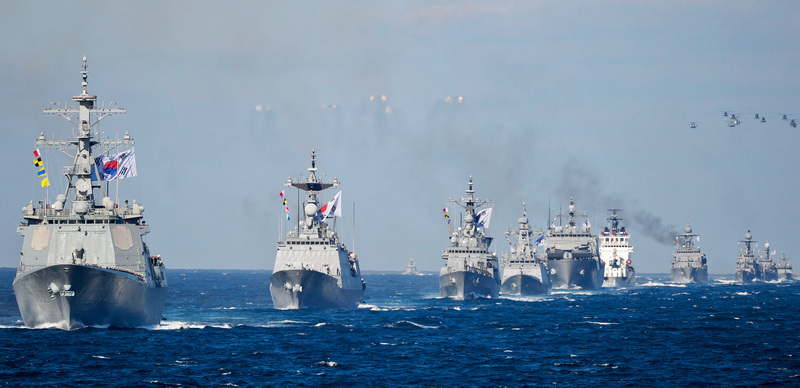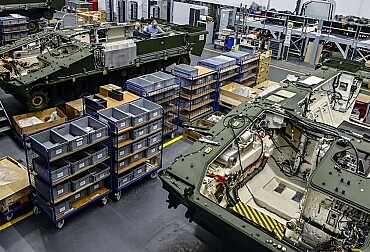South Korean Naval Modernization in context
The Republic of Korea (ROK) decided, due to the worsening security situation in its neighborhood, to modernize its armed forces. Apparently, the ROK Navy is set to undergo the most ambitious part of the modernization of the armed forces due to the possible acquisition of aircraft carriers, nuclear-powered submarines, and the newest destroyers.
The ROK Navy needs to develop capabilities to be able to counter not only the Democratic People's Republic of Korea (DPRK), but also the People's Republic of China (PRC). Moreover, there are clear ROK ambitions to build an ocean-going navy that, apart from protecting ROK itself, is capable of protecting important sea lines of communications far from the ROK shores. ROK Navy plans to be able to deploy blue-water navy surface fleet at the beginning of the 2030s.

The most important tool for naval power projection for any naval power around the globe are aircraft carriers. ROK Navy plans to acquire at least one 50 000-tonne aircraft carrier which could launch naval variant of KN-21 indigenous fifth-generation fighter jet. It means that the aircraft carrier, research, and developer, under the acronym CVX, will use Catapult Assisted Take-Off but Arrested Recovery or Short Take-Off but Arrested Recovery technology(STOBAR). The previous CVX program, which was aimed at 30 000-tonnes light aircraft carrier, had total budget of 2,1 billion USD. There are currently no estimates on the total cost of the new, larger carrier. The main manufacturers believe that they can deliver the aircraft carrier by 2033 even if they do not possess prior experience with aircraft carrier or carrier-borne aircraft building. The decision to build the aircraft carrier comes with the fact that PRC operates two Kuznetsov-class STOBAR carriers Shandong Liaoning and currently prepares the third aircraft carrier, Fujian, for sea trials. Fujian is a different class compared to Shandong and Liaoning and could be, at least by the tonnage, compared to the US Nimitz-class aircraft carriers. Moreover, the newest Chinese aircraft carrier is reportedly equipped with an electromagnetic catapult.
The most important part of the Carrier Strike Group, apart from the carrier itself, are submarines. ROK Navy plans to acquire conventionally powered KSS-III submarines that are domestically developed and built. Nine new KSS-III submarines can carry up to ten submarine-launched ballistic missiles with a range of at least 800 kilometers. Moreover, there is ongoing debate in the ROK about the possibility of acquiring nuclear-powered attack submarines (SSNs). In November 2023, then-nominee for the Chief of the Joint Staffs, Admiral Kim Myung-soo, said that SSNs are necessary for the ROK Navy. Apparently, there is also strong public support for this step. On the other hand, the main challenge will be the ROK-US agreement on nuclear material usage, which prohibits ROK from using nuclear technologies in the military. Even in the case of revision of the agreement, it is unlikely that the US would allow to supply ROK with the nuclear materials as this could change balance of power in the region of Northeast Asia.
The last major component of the Carrier Strike Group is the surface combatants. First, the ROK Navy is purchasing new Daegu-class frigates. Second, and more importantly, ROK Navy is currently acquiring new batch of KDX-III destroyers which are equipped with Aegis ballistic missile defense system and 128 vertical launching system cells for SM-2 missiles, Hyunmoo III cruise missiles, SM-3 and SM-6 missiles. Furthermore, ROK Navy plans to acquire KDX-IV midsize destroyers that could provide mass and further expansion of air defense.
As mentioned in this article, the ROK Navy plans to focus not only on the DPRK, but also on the PRC and other regional and global threats and actors. The former could be another regional power that seeks to modernize its armed forces, Japan. For instance, Japanese Self-defense Maritime Forces plan to refurbish its Izumo-class helicopter carriers to F-35Bs carriers under a similar concept to US Lighting-carrier ambition that seeks to convert America and Wasp-class Amphibious Assault Ships to carry approximately 20 F-35Bs fighter jets to support US Marine Corps and US Navy operations around the globe.
Thus, it will be interesting to watch how Japan will react to ROK Navy plans and acquisition of aircraft carrier and potentially indigenous SSNs due to the strategic importance of these assets and long-standing disputes between ROK and Japan regarding Dokdo/Takeshima Island located in the Sea of Japan.







